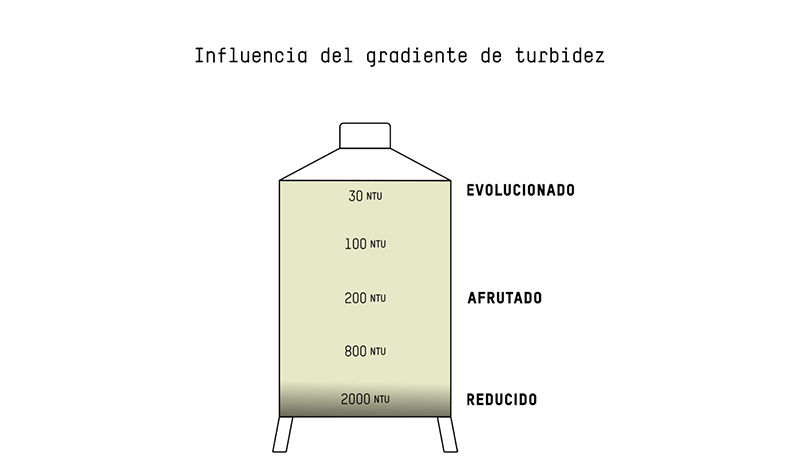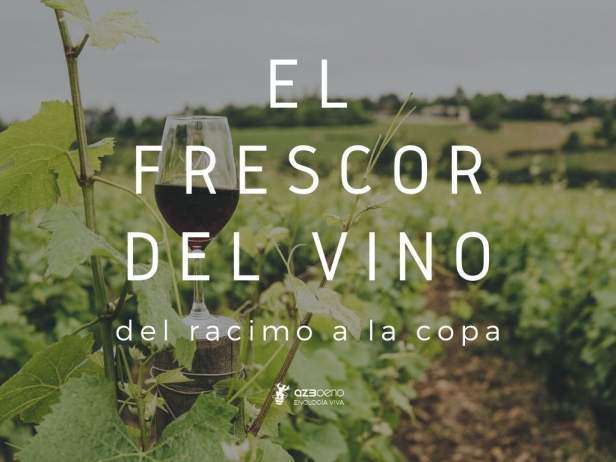
Consumers have very high expectations of our wines, not just that the wine is excellent but we also need to consider the wine’s life cycle.
Managing the reducing power, protecting the fruit, minimizing the effects of oxidation and preserving its properties during the winter are some of the key points to guarantee its expression to the consumer.
Therefore, the prevention of premature aging of wines is a matter of vital importance for the winemaker.
Once the wine is made, part of this potential is often lost in each operation, but more so in some than in others.
This depends on various factors, some of which we can control and measure, and others will help us to anticipate the preparation of the next harvest.
On the one hand, depending on whether the grapes have been macerated or not, it is necessary to know the extraction of polyphenols in must. The solid parts are rich in flavonoles and hydroxycinnamic acids, the main driver of oxydation in wines. Polyphenols are a permanent threat to white and rosé wines since:
- They inhibit the expression of the fruit.
- They add aggressiveness and bitterness.
- They are the driver and substrate of oxidation.
That is why a high tannic load in wine can lead to premature oxidation of white wines, which can be chemically oxidized once the wine is unprotected. When they reach the consumer, these wines are reflected as a phenolic profile, with an absence of fruit.
On the other hand, oxygen is one of the most delicate parameters. A controlled addition increases the fruit, and in general, improves the organoleptic qualities of the wine. However, uncontrolled contributions can oxidize the wines and make them lose their character.
If we are talking about young white wines, which will soon be released with the 2017 vintage, without aging, in general they can be more sensitive to oxidation. They are fresh wines, with a very intense fruit profile (fermental or thiolic) that are worked in a reducing environment in order to avoid the dissolution of oxygen. The processes that accompany them at this point are the elimination of proteins to give stability, and the elimination of polyphenols that cause oxidation. In these wines, the consumer looks for intense profiles of fruit, fresh, light, and in short, pleasant and easy-to-drink wines.
We have to bear in mind that, in oxidation, apart from oxygen, certain metals act as catalysts, accelerating oxidative reactions and causing a faster evolution of the wines. The presence of these compounds can be given by the addition of an adjuvant or from the vineyard.

On the other hand, if we talk about aged white wines, which are worked with lees for a few months or with wood, they can gain longevity and resistance to oxidation.
If the fermentation has gone well, without any organoleptic deviation, the lees present are a rich source of reducing compounds and will help us to maintain the fruit of the wines.
However, keeping whites on their lees can have certain risks:
- It is necessary to maintain the turbidity above 1000 NTU throughout the tank height to avoid turbidity gradients. If not, we find in the same wine that, if we taste the upper part, it may be oxidized, and if we taste it below, it may be reduced. In other words, in a tank we will have a wine with totally different characteristics, with a different evolution.
- Lees always have a reducing character, much higher than wine, so a wine with a vegetal character and with lees at the same time, can be green and reduced.
- The pressure exerted by the wine on the lees will limit their ability to release the yeast compounds, so they should not be compacted underneath.
To adjust all the conditions, it is important to keep the lees suspended without decarbonization, without losing the aromatic range and the freshness. There are many tools on the market that help to suspend the lees in the tank, but they decarbonize too much and we find wines that have matured due to the contribution and dissolution of oxygen that causes a change in the profile of the wines, achieving just the opposite objective to the desired one.
In all cases (mixer, inert gases, etc.) it is important to measure the amount of initial CO2 and the amount of CO2 over time and estimate the loss. The measurement of dissolved oxygen is also important, (<0,2 mg/L) y So2 between 25-30 mg/L to determine whether the work we are doing is adequate.
Ultimately, the way they are worked must respect the wine and exploit the positive potential.
______
Related news
THE FRESHNESS OF THE WINE, from the bunch to the glass
The fashion for fresh wines has ceased to be fashion to become a trend; more and more consumers are looking for elegance, length and freshness above all.
More than winemaking machines
The winemaker is the artist who observes the vineyard, interprets it and imagines the wine that could be produced from this plot.
Was it the wood or the process?
Today, we are thinking about one of the most important stages of production: the aging of the wine.


